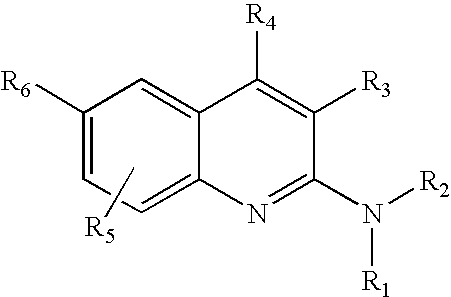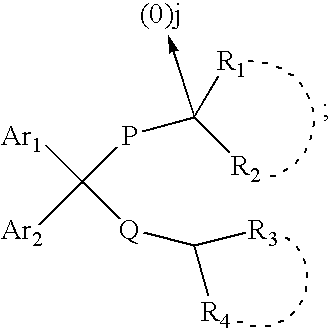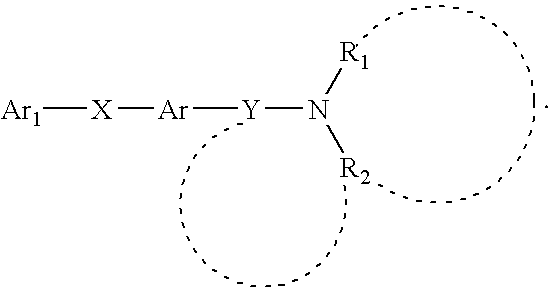2-Aminoquinoline compounds
a technology of aminoquinoline and compound, applied in the field of aminoquinoline compounds, can solve the problems of increased risk of diabetes, hypertension, gallstones, and chronic imbalance between energy intake and energy expenditure, and achieve the effects of improving the quality of life, increasing the risk of diabetes, and increasing the risk of hypertension
- Summary
- Abstract
- Description
- Claims
- Application Information
AI Technical Summary
Benefits of technology
Problems solved by technology
Method used
Image
Examples
example 1
(2E)-3-(4-chlorophenyl)-N-[2-(piperidin-1-yl)quinolin-6-yl]-prop-2-enamide hydrochloride
Step A: Preparation of 6-nitro-3,4-dihydrogiuinolin-2(1H)-one
In a 500 mL round bottom flask equipped with a stir bar was placed 3,4-dihydroquinolin-2(1H)-one (5 g, 34 mol). To the solid was added with stirring, concentrated sulfuric acid (100 mL). After complete dissolution of the solids, the reaction mixture was cooled in an ice / methanol bath. To the resulting solution was added water (25 mL) followed by dropwise addition by addition funnel of 61% aq. nitric acid (4.6 mL, 34 mmol; 2.1 mL 70% nitric acid diluted with 2.5 mL water). The resulting deep red reaction mixture was stirred for 0.25 h with cooling in the ice / methanol bath. The reaction mixture was carefully poured onto ice (250 g) with stirring and external cooling. After the ice melted, the resulting solids were filtered, washed with excess water (2×25mL) followed by ether (2×25mL). Resulting solids were air dried to provide the prod...
example 119
N-[2-(2-azabicyclo[2.2.2]oct-2-yl)quinolin-6-yl]-3-[6-(trifluoromethyl)pyridin-3-yl]propanamide
Step A: Preparation of 2-(2-azabicyclo[2.2.2]oct-2-yl)-6-nitroquinoline
A mixture of 2-chloro-6-nitroquinoline (5.0 g, 24 mmol, Example 1, Step B), 2-azabicyclo[2.2.2]octane p-toluenesulfonic acid salt (10.2 g, 36 mmol) and sodium bicarbonate (5.1 g, 60 mmol) were mixed in absolute ethanol (100 mL) and then heated at reflux for 24 h. The reaction mixture was cooled to r.t., and the solvent removed under vacuum. The solids were taken up in EtOAc (750 mL). The mixture was transferred to a separatory funnel washed with water (3×100 mL) then brine (100 mL). The organic layer was dried over sodium sulfate, filtered and the solvent removed under vacuum to afford the product as a yellow solid, MS: m / z 284 (MH+) which was used without further purification.
Step B: Preparation of 2-(2-azabicyclo[2.2.2]oct-2-yl)quinolin-6-amine
The product of Step A and palladium hydroxide on carbon (1.3 g, 20% b...
example 162
N-[2-(2-azabicyclo[2.2.2]oct-2-yl)quinolin-6-yl]-N′-[4-(methylthio)phenyl]urea
Step A: Preparation of N-[2-(2-azabicyclo[2.2.2]oct-2-yl)quinolin-6-yl]-N′-[4-(methylthio)phenyl]urea
To a solution of 2-(2-azabicyclo[2.2.2]oct-2-yl)quinolin-6-amine (21 mg, 0.08 mmol, Example 119, Step B), triethylamine (0.013 mL, 0.09 mmol) in 1 mL methylene chloride was added 4-(methylthio)phenylisocyanate (15 mg, 0.09 mmol). The resulting mixture was stirred at r.t. for 2 h. The solvent was removed under vacuum and the residue was purified by preparative thin layer chromatography eluting with hexane / ethyl acetate (1:1) to afford the product, MS: m / z 419 (MH+), as an off-white solid.
Using the appropriate starting materials and following procedures similar to those described above for Example 162, the following compounds were prepared:
Parent IonEx. #R7R = NR1R2(MH+) m / z1634651644231654831664551674571684171694641704181714151723731734411744421753881764031774351784511794551804211813531823751834011843...
PUM
| Property | Measurement | Unit |
|---|---|---|
| Ra | aaaaa | aaaaa |
| min-width | aaaaa | aaaaa |
| max-width | aaaaa | aaaaa |
Abstract
Description
Claims
Application Information
 Login to View More
Login to View More - R&D
- Intellectual Property
- Life Sciences
- Materials
- Tech Scout
- Unparalleled Data Quality
- Higher Quality Content
- 60% Fewer Hallucinations
Browse by: Latest US Patents, China's latest patents, Technical Efficacy Thesaurus, Application Domain, Technology Topic, Popular Technical Reports.
© 2025 PatSnap. All rights reserved.Legal|Privacy policy|Modern Slavery Act Transparency Statement|Sitemap|About US| Contact US: help@patsnap.com



